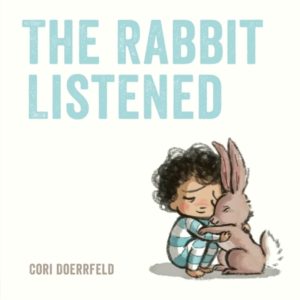While classics like Where the Wild Things Are often get the spotlight, there are many other picture books that kidlit editors frequently recommend and reference for their unique qualities. These books simply have something special about them that makes them invaluable resources for teaching, reading, and sparking joy.
So, instead of doing my normal industry insider interview this week, I’m going to share four picture books that I hear kidlit editors talk about a lot. And I’m including a few of the main things those editors often say about these books.
**If OPB readers enjoy this kind of access into what editors are thinking/saying, I’ll look into doing more of this from time to time. And perhaps I’ll share some of the picture book titles that I frequently talk about and recommend, too.**
 Alma and How She Got Her Name by Juana Martinez-Neal
Alma and How She Got Her Name by Juana Martinez-Neal
Why Editors Love It:
- Cultural and Personal Identity: This book’s focus on a young girl discovering the stories behind her names creates a rich, relatable exploration of heritage. Editors often mention its power to foster pride in one’s background and spark discussions about personal identity in a natural way.
- Illustrative Details: Martinez-Neal’s illustrations, created in soft, warm tones and detailed pencil, evoke a sense of intimacy and family warmth. The textures and gentle lines make each page feel personal and inviting.
- Conversation Starter: The book naturally invites readers to think about their own names and the stories they carry, making it a great tool for classroom activities and family reading time.
 The Bear and the Piano by David Litchfield
The Bear and the Piano by David Litchfield
Why Editors Love It:
- A Story with Layers: Litchfield’s tale explores ambition, friendship, and the bittersweet nature of success. Editors find it compelling that the story can be appreciated on different levels, offering something new for readers as they grow older.
- Visually Stunning: The illustrations are a blend of light, color, and texture, creating a sense of magic that captivates the eye. Litchfield’s art has an enchanting quality that complements the story’s emotional arc, making it a book editors often recommend for its artistic merit.
- Emotional Range: The narrative carries readers through a journey of joy, loss, and fulfillment, demonstrating how picture books can touch on complex emotions in a way that feels genuine and relatable.
 The Invisible String by Patrice Karst, illustrated by Joanne Lew-Vriethoff
The Invisible String by Patrice Karst, illustrated by Joanne Lew-Vriethoff
Why Editors Love It:
- Universal Emotional Appeal: This book addresses the concept of an unbreakable bond between loved ones, no matter how far apart they may be. Editors value how it introduces the idea of emotional resilience and comfort in an accessible way that resonates with children and adults alike.
- Simple Yet Powerful Message: The story’s clear and heartfelt message about connection makes it a favorite for social-emotional learning. Editors point out how The Invisible String is often used as a resource to help children navigate feelings of separation or loss.
- Approachable Illustrations: Lew-Vriethoff’s art complements the story with warm, friendly illustrations that depict diverse characters, making the story relatable to a wide range of readers. The balance between text and illustration is seamless, enhancing the impact of the book’s comforting theme.
 The Rabbit Listened by Cori Doerrfeld
The Rabbit Listened by Cori Doerrfeld
Why Editors Love It:
- Simple Yet Profound: The text is simple, but its impact is significant. The book teaches young readers the power of empathy and listening without offering solutions. Editors admire this as a masterclass in using simplicity to convey deep emotional truths.
- Universally Relatable Theme: The book’s exploration of grief and the different ways people respond to loss resonates with readers of all ages. Editors often highlight how it encourages conversation between adults and children about emotional resilience and support.
- Illustrations That Amplify the Message: Doerrfeld’s gentle, expressive illustrations subtly add to the story’s emotional weight without overpowering the text. The use of space and character expressions enhances the message of understanding and connection.
These four titles serve as excellent examples of how picture books can be simple yet profound, funny yet wise, and always impactful. Whether you’re revisiting these stories or discovering them for the first time, they remind us why well-wrought picture books hold a special place in the hearts and minds of readers of all ages.

